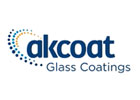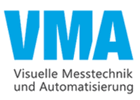Heinz-Glas has adopted a uniform process control system for its batch house and melting ends, made by a trusted Siemens Solution Partner.
Its harmonized process control systems in the batch house and melting end helps make operation, maintenance, and updates more uniform, easier and efficient.
Based in Kleintettau in Bavaria, Heinz-Glas is an example of how tradition and innovation can live well together.
With a family tradition as glassmakers dating back to 1523, the company is now one of the largest manufacturers of small glass bottles and jars for the perfume and cosmetics industry.
Its core competencies include its in-house development department, its own mould manufacture, and proven high-tech production and finishing at its 16 locations worldwide.
So it’s no surprise that this renowned company in the perfume and cosmetics industry relies on glass containers from Heinz-Glas.
One of the pieces of the puzzle behind this success story is the company’s process control system.
Its production facility in Kleintettau is where the raw materials are mixed in accordance with precisely defined formulas and melted into liquid glass in three melting ends.
Since 2019, both the mixtures and the tanks have been controlled using the Simatic PCS 7 process control system.
From standalone solution to integrated system
Andreas Lindhuber, Managing Partner of Schlemmer Prozess Systeme (SPS) in Deggendorf, Bavaria, says: “Even today, distributed control systems for batch houses are often developed separately from the system at the melting end.
"This is usually because the control systems are provided by the respective suppliers of the batch house and the melting end.”
Lindhuber is a specialist in measurement and control technology and his company has been a trusted Siemens Solution Partner since 2006.
SPS has managed the PCS 7 process control system at Heinz-Glas for about 20 years.
“But until recently we only looked after the system for the melting ends,” he adds.
“With the impending upgrade to the Simatic WinCC batch-house process visualisation system, it was a logical step for us to integrate the batch house into PCS 7.
“With this integrated approach, every time a new tank is constructed and every time a batch house is upgraded, our customers essentially have the opportunity to choose the system supplier that best suits their needs and have the process control system supported by a central contact.”
Immediate benefits
Production employees at Heinz-Glas noticed the benefits right after the conversion. Standardised operation means the batch house can now be operated from all the client systems distributed around the plant.
For many employees, that represents a saving of both distance and time in many operating sequences.
In addition, the standardised system makes it easier for SPS to perform upcoming maintenance and updates, which also reduces the costs for everyone else involved.
From design to automation with no system discontinuities
SPS made full use of key potentials for improvement from the outset.
“Uniform engineering is an important element in design quality,” Lindhuber observes.
An approach that SPS selected for Heinz-Glas was the rigorous use of control module types (CMT) to create the automation programme.
“That allows us to share information with the Simatic PCS 7 Plant Automation Accelerator to ensure easy and rapid software engineering,” he adds.
“After all, engineering of process control systems has always been a challenge that involves many participants, many different data formats, and many interfaces.
System discontinuities often lead to transmission errors that need to be fixed manually – and that means more time and expense.
“The Siemens software gave us access to a fully integrated solution for system design and documentation.
As a result, Heinz-Glas benefited from consistent engineering with no system discontinuities between automation design and the distributed control system.”
Using the CMTs also offers more benefits for the future by laying the groundwork that will enable Heinz-Glas to switch over to the fully web-based Simatic PCS neo process control system in the years to come.



























